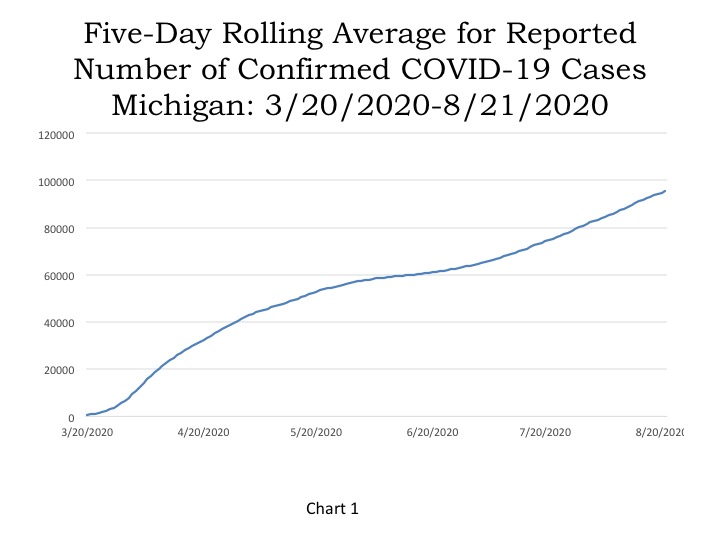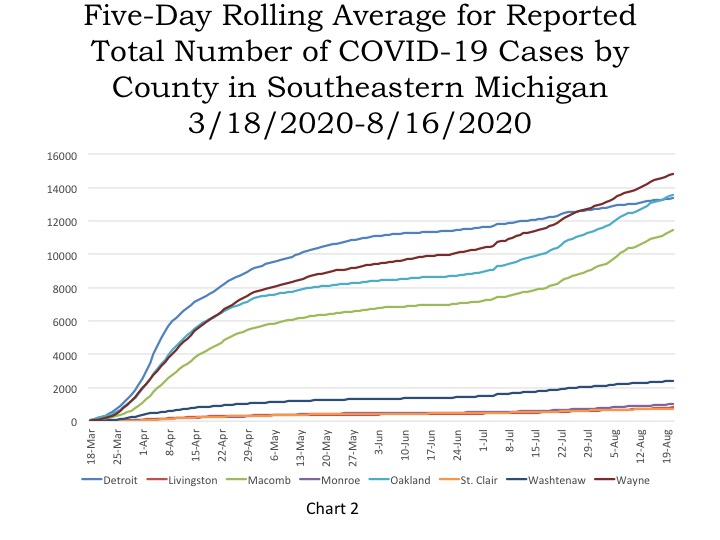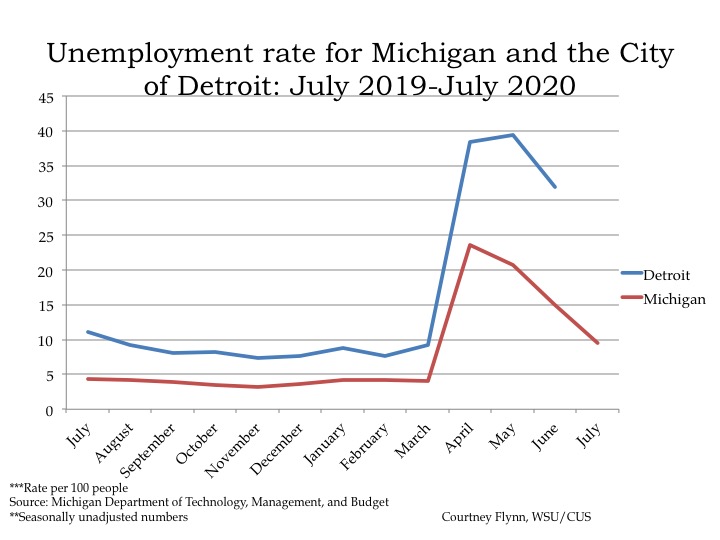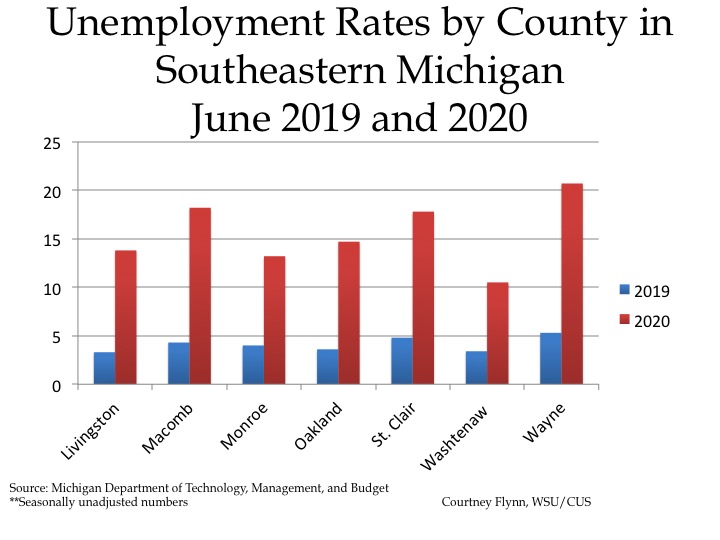Here we present some overall COVID-19 data for background, then present a series of economic indicators, which have largely been driven by COVID-19 since March. The global, national and local economy has been impacted by COVID-19 throughout 2020. In Michigan, the state began reporting cases in March and shortly following the first few hundred cases, unemployment numbers began to spike. Since then, there has been some economic stabilization but much uncertainty remains, both economically and for the overall health of our population.
On Aug. 23 the State of Michigan reported a cumulative total of 96,792 COVID cases, an increase of 738 cases from the day prior. This is a substantial rise from Michigan’s low point of 180. When looking at the five-day rolling average for the number of cases, which provides a smoother, more accurate look, 95,372 cases were reported as of Aug. 21. In Wayne County (without Detroit numbers) 14,846 cases were reported-the most in the region. Oakland County reported the second highest numbers at 13,571 and Detroit reported 13,334 cases.


Unemployment numbers have mapped COVID-19 numbers—each rising and falling together. But unemployment remains far higher than this time last year. In July of 2020 the State of Michigan reported an unemployment rate of 9.5 percent, and in July of 2019 it was reported at 4.3 percent. For Michigan, the unemployment rate reached its highest in April of 2020 at 23.6 percent. The City of Detroit, which regularly posts higher unemployment rates than the State, continued to do so at much higher rates following the first reports of COVID. In May of 2020 Detroit reported a 39.4 percent unemployment rate, which then decreased to 31.9 percent in June (July data at the local level is not yet available from the State). While there was a decrease, these rates are still extraordinarily higher than the year prior.

To break out these drastic changes in unemployment, we show how the rates changed for the counties in Southeastern Michigan from June of 2019 to June of 2020.
In June of 2019 Wayne County posted the highest unemployment rate at 5.3 percent and Livingston County posted the lowest at 3.3 percent. Fast forward to June of 2020 and the lowest unemployment rate reported in Southeastern Michigan was Washtenaw County at 10.5 percent; Wayne County reported the highest rate at 20.7 percent. Wayne County also has the highest number of COVID cases in the region, and throughout the state at the county level.
In March of 2020 many businesses were temporarily shuttered by Gov. Gretchen Whitmer’s orders to help protect the population. And, as COVID case numbers have become more manageable for the health care systems and better systems have been put in place to slow the spread of the virus, more businesses have been reopening. However, restrictions still apply in how businesses can operate and recommendations are still remain in place over whether people should be frequenting businesses for pleasure over necessity. All of these factors, along with individuals’ personal beliefs, have all certainly had an impact on the economy.

COVID is certain to have lasting impacts on our economy and we will continue to provide updates on this in terms of unemployment, the housing market and government funding.